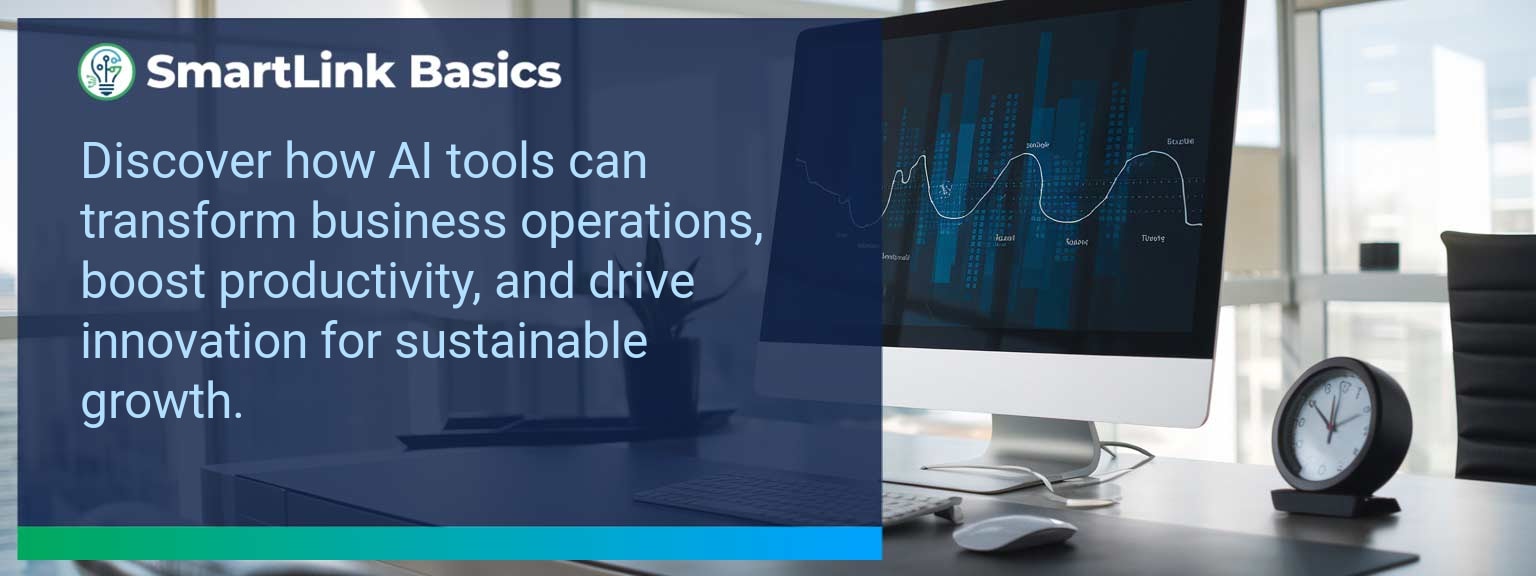Accenture research shows that businesses applying AI to core processes can increase profitability by an average of 38% by 2035. Sales leaders who adapt early are already reshaping their teams’ performance models. At SmartLink Basics, we see AI tools as more than software—they are operational accelerators that, when applied correctly, unlock measurable revenue gains. This article examines how to identify and solve strategic sales challenges with AI-driven intelligence. You’ll see how to integrate artificial intelligence tools, design implementation plans, and track results using clear performance metrics. By the end, you’ll have a pragmatic roadmap that aligns AI technology to business objectives while preparing for the next wave of innovation.
- Pinpoint core sales barriers before applying AI solutions
- Leverage AI software to automate data-heavy, low-value tasks
- Integrate AI applications with existing CRM and analytics systems
- Measure ROI using both leading and lagging indicators
- Continuously train teams to adapt to emerging AI capabilities
What Changed and Why AI Tools Matter Now
AI adoption reached a tipping point with more than 50% of organizations implementing intelligent automation (McKinsey, 2024). The competitive advantage now belongs to sales teams who treat AI tools as embedded components of their revenue systems. This shift matters because buying cycles have accelerated, requiring continuous analysis of complex datasets. With artificial intelligence tools, leaders can act on predictive insights instead of reactive reports. For instance, deploying machine learning tools to score leads by likelihood-to-close can shorten the sales cycle by weeks. The actionable insight: integrate AI-driven scoring into your pipeline review meetings to improve conversion efficiency.Redesign the Revenue Operating System with AI Tools
To harness AI productively, leaders need to rethink the revenue system from prospect acquisition to deal closure. AI tools, when applied correctly, create compounding efficiency across four operational layers. ICP, Segmentation, and Targeting AI applications can refine your Ideal Customer Profile by analyzing transactional and behavioral data at scale. One SaaS provider used deep learning applications to find high-propensity verticals, cutting prospecting time by 30%. The takeaway: refresh targeting criteria quarterly using AI-driven analytics. Pipeline Architecture Automation software can manage pipeline stages dynamically, ensuring stalled deals surface for intervention. This enables better capacity planning and forecasting accuracy. Plays and Messaging Natural language processing tools can monitor engagement data and suggest message adjustments in real time. This adapts your narrative to shifting buyer priorities. Operating Cadence Integrating AI insights into weekly sales stand-ups ensures decisions are informed by current, predictive data rather than last month’s lagging indicators.Identifying Key Business Obstacles
Before selecting AI software, define the obstacle in precise, measurable terms. Is the issue insufficient leads, poor qualification, long sales cycles, or low close rates? The accuracy of your problem statement directly influences the value of the AI solution. One manufacturing firm found that 40% of its leads lacked budget authority. By targeting this with AI-driven lead qualification filters, they reduced wasted sales calls by half. Actionable step: conduct a 30-day baseline analysis of your sales funnel inefficiencies before shopping for AI technology.Leveraging Artificial Intelligence For Solutions
Matching the right AI tools to specific challenges requires a balance of capability and integration feasibility. For example, pairing AI-driven forecasting models with ERP data creates a dynamic view of demand, avoiding costly overproduction. Automation software is best suited for routine workloads such as CRM updates, reporting, and data normalization. To avoid underutilization, establish clear operational uses backed by KPIs before deployment.Measuring The Positive Impact
Organizations often fail to quantify the full ROI of AI investments. Establish clear metrics across three categories.| Category | Metric | Definition | Target |
|---|---|---|---|
| Leading | AI-predicted deal conversion rate | % of AI-prioritized deals closing | +15% over baseline |
| Lagging | Revenue per rep | Total sales revenue divided by active reps | +20% YoY |
| Quality | Lead match score | % of leads meeting ICP criteria | 90%+ |
Preparing For The Next Wave Of Innovation
AI technology is evolving rapidly, with multimodal models and real-time decision engines on the horizon. The key to sustained performance is to build an adaptable sales infrastructure that can integrate these capabilities without major disruption. Regular skills training and piloting emerging AI applications before full rollout keeps the team ahead. Explore the AI-driven sales enablement resources from SmartLink Basics to stay future-ready. <Get the 90-day plan, coaching rubric, and dashboard template to operationalize AI in your enablement program.









